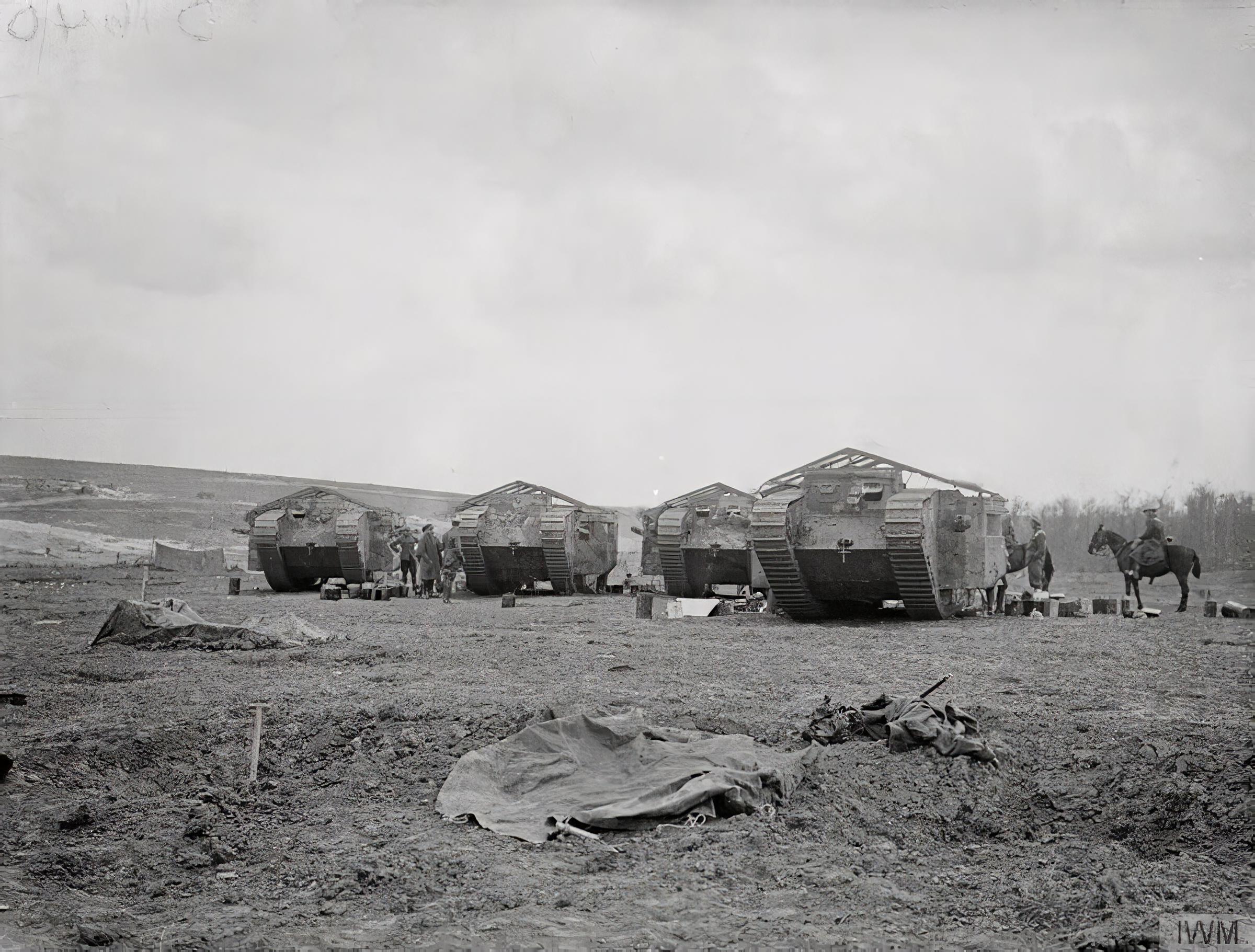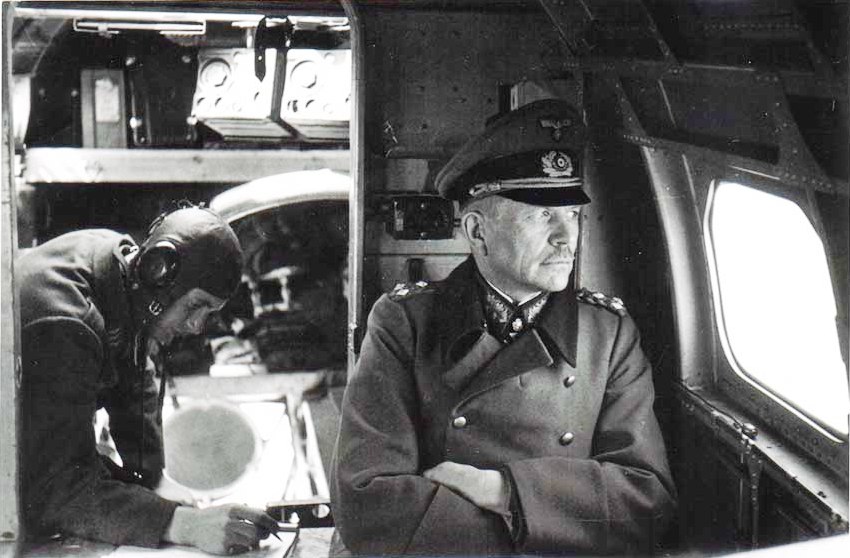Steel Commanders – The machines
It was August 8, 1918, which is known as “the black day of the German army”, in Amiens, France. 530 British tanks were secretly assembled on a 13-mile front and unleashed without the usual preliminary artillery barrage. Surprise was total. A wave of heavy armour, almost impenetrable to bullets and grenades, broke into the German lines, achieving major breakthroughs for the first time in years. Heavy casualties and an overall panic routed the powerless German infantry. What would follow was blow after blow of armoured fists, heralding the beginning of the end of the Great War.
Chariots of war

Less than two years after the tank’s combat debut at Flers-Courcelette during the Battle of the Somme, the technological leaps were immense. Back in 1916, the early Mark I tanks were restricted in their effectiveness. They were too few in numbers, too dispersed, and plagued by technical issues. Nonetheless, what had been achieved by just months of planning and engineering – the gathering of armour plates, naval guns, tractor tracks, engines and transmission systems – was nothing short of the weapon that would change warfare for the coming century. At Amiens, the British Tank Corps was freshly equipped with the new Mark Vs, a new benchmark in tank design. They were still comparatively slow and offered a short operating range of movement, yet they were equipped with a more powerful engine and an epicyclic gear steering system that allowed for just one driver. A more sophisticated design helped to eliminate the hellish conditions inside the tanks and ensure the overall survivability of their crews.
Just three weeks before Amiens, the French had staged their own large-scale tank offensive. More than 400 French Schneider, Charmond and Renault tanks had been sent into action. The light but agile Renault FT tank proved to be yet another influential design. It was the first tank with its armament mounted inside a rotating armored turret. The driver was situated at the front of the hull, the engine compartment was separated from the rest of the crew, and the track was on sprockets at the rear. Outfitted with a short-barrelled 37mm cannon, it could fire the whole range of ammunition, from armour-piercing shells to canister shot and high explosive rounds. Both the Mark V and the Renault FT would set the standard for modern tanks. Winston Churchill called them the “chariots of war”, instruments of modern science and precision.
A stop to tank production
The armistice and the end of the Great War put the brakes on tank production and new designs.
Plans had already been made for a huge offensive in 1919, though, calling for thousands of tanks to be unleashed at once all over the Western Front. Yet what followed in the interwar years was not just a drastic reduction of the existing tank force, but also a big slowdown of innovation. The Anglo-American-French cooperation that was to produce more than 1,200 new heavy tanks was scrapped, and funding for new prototypes and experiments was withdrawn.
Critics then came forward asking not only about “how” to use tanks in the future, but “if” they should use them at all. Traditionalists viewed tanks more as a freakish byproduct of trench warfare, something that was already outdated. It was argued that large tank formations could never again achieve large-scale surprise and would instead inevitably run into prepared rows of artillery and anti-tank defences, and even those in favour of tanks wanted to use them more like mobile shields or gun-platforms that advanced with the infantry into battle. Only a handful of influential men thought beyond this. Visionaries like Jean-Baptiste Estienne, Heinz Guderian or JFC Fuller advocated for large and independent armoured armies, not tied to the infantry’s slow pace.
Captain Dwight Eisenhower predicted the need to think ahead: “In making local counterattacks, the tank has already proven its worth, and the new tank will greatly increase the opportunities and effect of such actions. The clumsy, awkward and snaillike progress of the old tanks must be forgotten, and in their place we must picture this speedy, reliable and efficient engine of destruction.”
Eisenhower’s words, however, mostly fell on deaf ears. France, which had the largest armoured force on the planet at the end of the Great War, put tanks in an auxiliary role with the infantry. The US abolished the independence of its Tank Corps altogether. Only Britain, establishing its Royal Tank Corps in 1923, began looking into the creation of an “Experimental Mechanised Force”. Not a whole lot came out of it.
And yet, on the one hand, the military planners of the interwar years were hindered by static doctrines, unable to break away from infantry support, but on the other hand, this indecisiveness allowed for really ambitious ideas. The super-heavy French Char-2C tank sported a second turret at the rear. The British A1 Independent had four additional machine gun turrets. The Soviet T-35 was to have five turrets, because why not? Who knew what would work? Should they use light tanks and fast tankettes, or heavy, multi-barreled monsters with impenetrable armour?
Keen on development
But though the Western Entente hesitated, both the Red Army and the Wehrmacht were eager to keep up with new developments, to the point of secretly cooperating with each other.

The mobility of tanks and armoured vehicles fit especially well with the German doctrines of mobility. With the help of the combustion engine, the Wehrmacht could maybe achieve what was not previously possible with horses and marching feet. By the 1930s, tanks had become more maneuverable and controllable, with higher engine power and the increasing use of radio. This made the military experts surrounding Guderian think beyond simply using them as battering rams. Their speed would assure surprise, and through surprise they would achieve victory.
“The layman, when thinking of a tank attack, tends to envisage the steel monsters of Cambrai and Amiens (…) He thinks of vast wire entanglements being crushed like so much straw; he remembers how the tanks crashed through dug-outs, smashing machine-guns to splinters beneath their weight; he recalls the terror that they inspired as they ploughed through the battlefield, flames darting from their exhaust pipes, and how this “tank terror” was described as the cause of our collapse on the 8th of August. Such steam-roller tactics are one – though not the most important – of the things tanks can do.” – Heinz Guderian
The German advance into Poland in September 1939 was spearheaded by over 2,600 tanks. This large number of mostly light tanks, in close support with dive-bombers and artillery, swarmed in rapid and well-coordinated maneuvers through the Polish lines, creating chaos and confusion in the rear. When the Wehrmacht turned west, they concentrated their Panzer Divisions into even larger Panzer Groups and Panzer Corps. Tanks crossed the Ardennes and the Meuse in record time, outmaneuvering the, in many ways, superior French Char B1 and SOMUA tanks, in an armoured rush that became feared as “Blitzkrieg”.
When the Wehrmacht’s mighty Panzer Armies eventually turned eastwards again in 1941 into the Soviet Union, they initially enjoyed tremendous success. It was still pretty much the same force that had been fielded against France, and it caught the Red Army by surprise, outmaneuvering and encircling millions of troops. The Soviet Union’s tank force had been caught in transition. When the Red Army had fought Finland over the winter of 1939/40, their thousands of tanks failed to secure victory against an opponent who basically had none. A large portion of their T-26 and T-28’s were destroyed by effective Finish anti-tank tactics. With the German Panzer Corps wreaking havoc in the west, Stalin wanted the Red Army to be equipped with an equally large tank force, but this came too late. However, to the Wehrmacht’s surprise, they once encountered a bunch of superior tanks. The Soviet T-34 was an excellent – if crude – tank at the time. The heavy KV-1 was immune to nearly all German anti-tank guns, as was the KV-2 with its 152mm howitzer.
A new era of tank warfare
In 1942, a new phase of tank warfare began. The first half of the Second World War was fought by tanks that had mainly already been built, with some upgrades and improvements. But by now, all nations went back to the drawing board, putting the bitter experience of what worked and what didn’t into new designs.
Questions once more revolved around the three key components of tank design: Armour, Mobility and Firepower. They had to consider barrel length, recoil and sighting systems, loading speed, as well as shell- and fuel-carrying capacity. Should they carry more high explosives or more armour piercing shells? Should they use gasoline or diesel? Or should they be high in numbers or high in quality?
With the US entering the war, its industrial might was brought in. The new M4 Sherman tanks appeared just in time for the Second Battle of El Alamein. With its 75mm short barrel gun, the versatile tank made a difference over the hot sands of North Africa. The British as well, after losing the majority of their outdated Matilda tanks in the duels of the desert, introduced the Cromwell, their first all-purpose cruiser tank. All contributed to the eventual defeat of the German Afrika Korps.
In the east, the age of Blitzkrieg had ended. The armoured stalemate at Kursk in July 1943 proved that the Soviet Union had caught up in mass-producing their T-34. There, in the battle on the fields of Prokhorovka, where an elite SS-Panzer-Corps was engaged by hundreds of Soviet tanks and self-propelled guns, the German initiative was finally and permanently broken. Increasingly, the tank war became one of attrition, a war which the Wehrmacht could not hope to win. Trying to stem the tide, they upgraded their arsenal as well. Their new Tiger and Panther tanks could fire powerful shells from high performance barrels, penetrating thick armour over long distances. But despite the Tigers’ excellent optics and armour, they were technically flawed, with unreliable transmissions and underpowered engines. And worst of all, they were expensive. A tank like the well-rounded but simplistic Russian T-34 could be produced en masse, and the American Sherman tank was cheaper by the dozen. Facing the Allied invasion in Normandy in June 1944 and the Red Army’s unstoppable advance in the east, the German Wehrmacht was not that far away from yet another “black day”. What would follow was blow after blow of armoured fists, heralding the beginning of the end of the Second World War.
War of tanks
The war of tanks was decided where it began – with the blueprints of the designers and manufacturers. From the first tank engagement at the Somme in 1916, to the great armoured battles at the gates of Berlin in 1945, tank design had taken a huge leap forward. In 1939, no one really knew what a future tank-war would look like, and many expected it just to be Great War Two, trench warfare-boogaloo, and so when the Second World War began, the nations fielded a variety of tank designs, a mix of light, medium and heavy tanks with often contradicting doctrines.
By the end of the Second World War however, the Soviet IS-2, the German Panther, the American Pershing and the British Comet all shared a similar design. Their silhouettes were low, their tracks wide and their armour sloped. Turrets were cast and were equipped with long, high velocity barrels. Would the fundamental design change as the cold war began? What was the post-world-war-two future of the tank? Perhaps one day we’ll answer those questions right here.
The history of tank development heavily inspired our song ‘ Steel Commanders ‘. Take a look at the lyrics we wrote here.
If you’re interested in a more visual interpretation of the above story, watch our Sabaton History episode, Steel Commanders – Tanks and Panzer!:





















